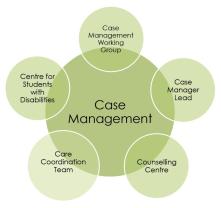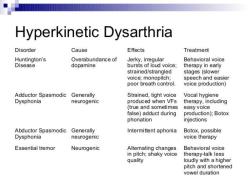What are the three models of case management?
There are various models of case management, each with its own approach and focus. While the number of models can vary, three common models of case management are often recognized. These models include the Brokerage, Strengths-Based, and Clinical or Rehabilitative models:
Brokerage Model:
- In the Brokerage model, the case manager serves as a mediator or "broker" between the client and available services and resources. The emphasis is on connecting the individual to existing services in the community. The case manager assesses the client's needs, identifies appropriate services, and facilitates access to those services. This model is often used in situations where a variety of services are available, and the main role of the case manager is to coordinate and link the client to the right resources.
Strengths-Based Model:
- The Strengths-Based model focuses on identifying and building upon the individual's strengths and capabilities rather than solely addressing deficits or problems. Case managers using this model work collaboratively with clients to recognize and leverage their existing strengths, skills, and resources. The emphasis is on empowering the client to take an active role in problem-solving and goal-setting. This model promotes a positive and client-centered approach, emphasizing the individual's capacity for growth and self-determination.
Clinical or Rehabilitative Model:
- The Clinical or Rehabilitative model is often employed in healthcare and mental health settings. It emphasizes the delivery of clinical or rehabilitative services to address specific health or mental health needs. Case managers using this model typically work closely with healthcare professionals, therapists, and other specialists to coordinate medical and therapeutic interventions. The focus is on providing clinical support, treatment, and rehabilitation services to help individuals manage health conditions or disabilities effectively.
It's important to note that these models are not mutually exclusive, and case management approaches may incorporate elements from multiple models based on the needs of the client and the goals of the program. The choice of model may also be influenced by the specific context, such as the setting (e.g., healthcare, social services, mental health) and the population served.
Additionally, other models, such as the Ecological Model or the Task-Centered Model, are also used in specific contexts to guide case management practices. The key is to select a model that aligns with the goals of the case management program and is well-suited to the unique needs of the individuals or clients receiving services.
Choosing the right case management model is crucial for providing effective support and achieving desired outcomes. Let's explore the three main models – medical, strengths-based, and broker – to understand their key differences and how to choose the best fit for specific needs:
1. Demystifying the Models:
- Medical Model: Emphasizes diagnosis and treatment of clients' problems, often driven by clinical assessments and interventions. The case manager acts as a coordinator and advocate within the healthcare system.
- Strengths-Based Model: Focuses on identifying and building upon clients' existing strengths and resources. The case manager works collaboratively with clients to set goals and overcome challenges through their own capabilities.
- Broker Model: Positions the case manager as a facilitator who connects clients with appropriate services and resources from various community agencies. The focus is on navigating complex systems and advocating for clients' access to needed support.
2. Key Differences:
- Client Focus: Medical model primarily addresses diagnosed problems, while strengths-based and broker models empower clients through their strengths and connect them to external resources.
- Professional Background: Medical model often involves clinicians, while strengths-based and broker models can attract diverse professionals including social workers, community workers, and advocates.
- Intervention Types: Medical model emphasizes clinical interventions, while strengths-based model uses self-directed strategies and broker model relies on external resources.
- Client-Case Manager Relationship: Medical model tends to be directive, while strengths-based and broker models encourage collaboration and client empowerment.
3. Choosing the Right Model:
The best model depends on several factors:
- Client Needs: Consider the nature of the client's challenges and their desired outcomes. Are they seeking medical treatment, personal development, or access to external support?
- Resources: Assess the available resources within the organization and community. Does the model require specialized expertise or readily available services?
- Organizational Philosophy: Align the model with your organization's values and vision. Does it prioritize clinical interventions, individual empowerment, or system navigation?
Remember: No single model is universally "best." Combining elements from different models can be beneficial in certain situations. By understanding the nuances of each model and carefully considering your clients' needs and organizational context, you can make an informed decision and build a case management approach that fosters effective support and empowers clients to achieve their goals.
Feel free to ask if you have further questions about specific client contexts, the advantages and disadvantages of each model in various situations, or practical tips for implementing a chosen model effectively. I'm here to help you navigate the intricacies of case management models and choose the path to success for your clients and organization.












